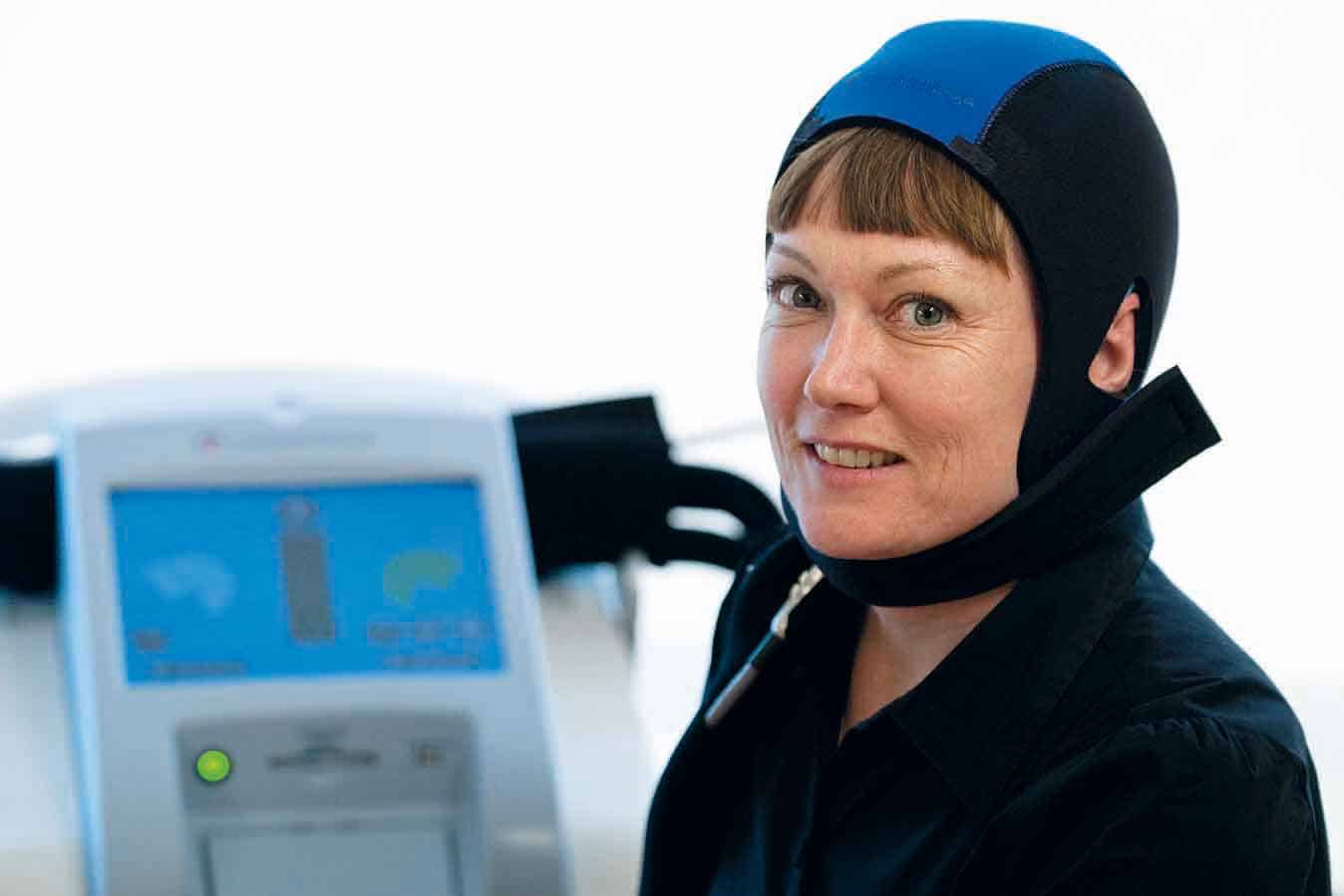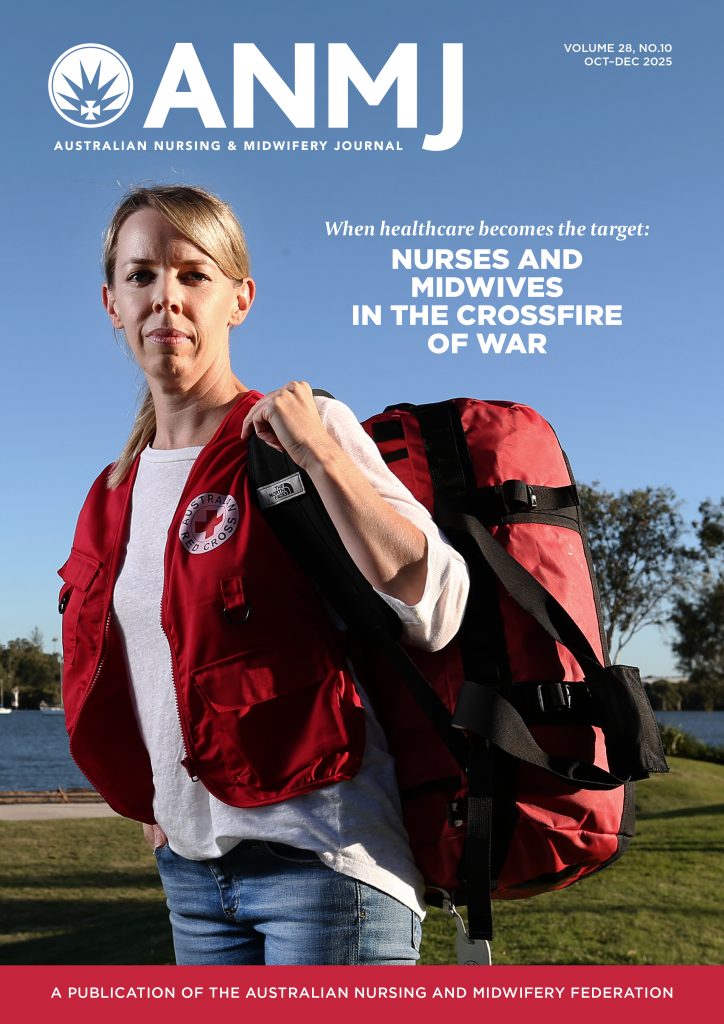Chemotherapy-induced alopecia (in this paper called ‘alopecia’) can instantly turn a person into a cancer patient. In the outside world, patients have to deal with the stigma of baldness should they choose not to wear a wig.
Inside their homes, cancer patients will see their changed appearance in the mirror every day, reminding them of their disease; hair loss is a distressing experience for the majority of patients. In fact, when patients rank side effects of cancer treatment, alopecia is indicated as one of the most burdensome, even six months after treatment has ended (Batchelor 2001). Cancer patients cope very differently with alopecia: some experience an altered sense of self because of the changed appearance; others try to look normal, use wigs or head covers and/or sharing being bald (Williams, Wood, and Cunningham-Warburton 1999). Alopecia is however not inevitable; it can be prevented by using scalp cooling, the topic of this issue.
CLINICAL BACKGROUND OF ALOPECIA
Hair matrix cells in the anagen phase are rapidly proliferating and remain in this phase for two to eight years. These anagen hair follicles are highly susceptible to cytotoxic agents. However, hair follicles have a high capacity of damage control: follicle repair between chemotherapy cycles means that many patients do not experience total alopecia but more frequently have patchy, unevenly distributed hair loss. If follicle damage is substantial, hair synthesis is seriously impeded, causing a fracture in the hair and subsequently severe hair loss (Paus et al. 2013). In patients receiving agents toxic to hair follicles, loss usually starts one to three weeks after the first chemotherapy and patients become bald within several days (Batchelor 2001). Less toxic agents may cause slower hair loss, which becomes clinically apparent after several chemotherapy courses. Permanent alopecia has been described after high dose chemotherapy in haematological malignancies, and after taxane therapy in early breast cancer. This has been attributed to damage to stem cells in the hair bulge (Dunnill et al. 2018).
INCIDENCE AND SEVERITY OF ALOPECIA AND REGROWTH
The incidence of alopecia is rarely quantified in clinical trials or observational studies. If incidence is reported, the literature shows a large variation and thus healthcare professionals inform patients about the chance for hair loss according to their clinical experiences (Hurk van den et al. 2015). It is estimated that half of the patients undergoing cytotoxic treatment experience severe alopecia (Hurk van den 2013). For Australia this would mean that thousands of patients each year suffer from it. The severity of alopecia depends on many factors, including the type, dose, me and frequency of administration of the cytotoxic agents. Other possible factors are the patients’ age, comorbidities, nutritional and hormonal aspects, psycho-emotional stress and multiple other factors within the individual patient (Paus et al. 2013).
Hair growth is usually only temporarily inhibited by chemotherapy. The hair starts growing again because the stem cells of the hair follicle have been protected against cytotoxic agents, presumably by their slower growth rate and enhanced repair mechanisms (Paus et al. 2013). The normal hair growth rate usually returns within several weeks to several months after the last chemotherapy infusion (Trueb 2009; Karakunnel and Berger 2008). When hair grows again, around 65% of the patients experience a change from their previous hair colour or texture (dryness, curling, straightening) (Batchelor 2001), also generally transient. The altered shape of the hair shaft (curly or straight) probably results from asymmetric proliferation and differentiation during recovery of the hair follicle. Changes in colour are among other changes caused by the melanocyte response to cytotoxics (Paus et al. 2013).
OPPORTUNITIES TO ADDRESS ALOPECIA
Since the 1970s, attempts have been made to prevent alopecia. Currently, there are no pharmacological agents which are effective in prophylaxis; however, there is data showing faster regrowth of hair after chemotherapy with eg. minoxidil (Wang, Lu, and Au 2006; Shin et al. 2015). Several cosmetics are on the market which claim to reduce hair loss or to stimulate hair growth, also during and after chemotherapy. However, to our knowledge, no studies have been published about the effectiveness of these products against alopecia. Scalp cooling is currently the only method to prevent alopecia. It was originally practised using ice or cryogel packs that were applied on the head (Timothy, Bates, and Hoy 1980). Cool caps stored in the refrigerator are sometimes still used but continuous cooling machines are the main scalp cooling systems utilised.
Scalp cooling induces vasoconstriction and a reduced biochemical activity, both minimising cytotoxicity for the hair follicle. After scalp cooling, diminished hair shaft diameters have been observed, indicating only moderate damage and quick repair of the hair follicle. Thus, hair keeps growing during chemotherapy with scalp cooling (Hurk van den et al. 2013), and a faster hair growth rate has been observed following scalp cooling (Sahadevan, Ding, and Del Priore 2016; Shaw et al. 2016).
Scalp cooling is indicated for all patients with solid tumours receiving chemotherapy. Contraindications are patients with haematological malignancies, cold sensitivity, cold agglutinin disease, cryoglobulinaemia, cryofibrinogenaemia, cold post-traumatic dystrophy and patients who will have whole head radiation therapy before or following chemotherapy.
Scalp cooling is continuously applied 20–45 minutes before, during and 20–150 minutes after chemotherapy infusion. Cooling times have been arbitrarily chosen, except for docetaxel mono- or combination therapy (75/100 mg/m2) where randomised trials showed that a post-infusion cooling time of 20 minutes is sufficient (Komen et al. 2016).
Traditionally, some doubt has existed whether scalp cooling is safe. The incidence of scalp skin metastases in solid tumours is very low and does not differ between scalp cooled and non-scalp cooled breast cancer patients after more than five years follow up (Rugo, Melin, and Voigt 2017). In addition, no difference in patient survival has been observed (Lemieux et al. 2015).
Tolerance of scalp cooling has been studied using overall comfort and acceptability scores. The majority of patients tolerate scalp cooling very well, headaches and coldness are the most frequent complaints (Rugo et al. 2017; Nangia et al. 2017). The majority of scalp cooling participants are satisfied with their decision to undertake scalp cooling, and regardless of hair loss would likely scalp cool again (Shaw et al. 2016). Injuries due to extreme cold have only been reported following the use of cool caps from the refrigerator (Belum et al. 2016).
Efficacy of scalp cooling has been proven in randomised trials, supported by many observational studies (Shah et al. 2017). Two American studies showed that approximately 50% of patients with early breast cancer receiving anthracycline and taxane combinations had satisfactory hair preservation (Rugo et al. 2017; Nangia et al. 2017). Taxane based regimens had better outcomes.
Determinants of efficacy of scalp cooling are first of all type and dose of chemotherapy. Besides, multivariate analyses indicated lower efficacy at shorter infusion times, older age and with African/Asian hair types (Hurk van den et al. 2012). One more recent univariate study showed negative influence of comorbidities, smoking and neutropenia (Schaffrin-Nabe et al. 2015).
Optimal scalp skin temperature has been shown to be below 22°C. Efficacy may be improved by a more individualised approach as at present the scalp skin temperatures vary between 10-31°C between patients when using a scalp cooling machine (Komen et al. 2016). The influence of temperature on cooling mediated cytoprotection has also been shown in in vitro models for the culture of human keratinocytes, in which cooling markedly reduced or completely inhibited drug cytotoxicity (Al-Tameemi et al. 2014). Other determinants of improved efficacy for scalp cooling remain controversial and knowledge on biological factors is lacking (Dunnill et al. 2018).
THE ROLE OF NURSES
Nurses play a very important role in scalp cooling. They inform the patient about this supportive care opportunity and in most cancer centres, nurses fit the cap after switching on the cooler and monitor the patient during scalp cooling. The fitting of the cap is of utmost importance as air between the cap and the scalp skin increases the temperature, causing additional hair loss (Komen et al. 2013). Nurses also support patients to cope with the coldness, especially at the start of scalp cooling, and they guide patients to the bathroom, as they might feel somewhat dizzy because of the cold cap.
Because the patient has to stay in the day care unit for a longer time period than without using scalp cooling, there is the challenge of organising the time schedules. Close collaboration between oncologists and nursing staff is essential to overcome these initial difficulties (Shaw et al. 2018), as is support from the institution. There are some excellent champion units in Australia eg. the Mater Hospital in North Sydney, where scheduling of patients having chemotherapy and scalp cooling is optimised, and other units can adopt their practices.
Traditionally, nurses advise patients to cut their hair short before treatment, but this is less relevant when scalp cooling is used. In fact, maintaining some length in the hair is helpful in styling to cover possible patchy hair loss, which is most often present on the crown. Earlier advice to avoid washing and colouring hair has given way to a more pragmatic approach, where gentle hair management and avoidance of matting are favoured. Advice for hairdressers has been developed and can be found on the website of the Mater Hospital (mns.org.au/ourservices/list-of-services/cancer-care/scalpcooling-system).
RESULTS
The use of scalp cooling increases worldwide. In Australia, the first site – the Mater Hospital – started scalp cooling in 2008. They performed studies on the implementation of scalp cooling (Shaw et al. 2016; Shaw et al. 2018) and have treated over 500 patients to date. At present, about 100 scalp cooling machines are installed in over 40 Australian hospitals. The Mater Hospital also published videos about the topic for patients and healthcare professionals, which are also available through the website mentioned above. Patients are not charged for use of scalp cooling in Australia, as most of the machines have been donated by philanthropic organisations.
International collaboration of researchers with various professions led to the formation of the CHILL group: Cancer related Hair loss- International Linkage and Leadership. This group published a website with information about alopecia and scalp cooling, including a decision tool (cancerhairloss.org).
Authors
Corina van den Hurk, PhD, Netherlands Comprehensive Cancer Organisation (IKNL), Godebaldkwartier 419, Utrecht, The Netherlands – epidemiologist
Professor Annie Young, PhD, University of Warwick and University Hospital Coventry and Warwickshire NHS Trust, Coventry, UK – professor nursing
Professor Frances Boyle, AM, MBBS (Hons 1), PhD Pharmacology, FRACP, Patricia Ritchie Centre for Cancer Care and Research, Mater Hospital and University of Sydney, Sydney, Australia –medical Oncologist








